Laurel Holloman is known for her striking large-scale paintings and vibrant use of colour. Painting through abstraction with subtle hints of elemental imagery, Laurel explores emotion using playful brushtrokes and layering that give her paintings a third dimension. Ever since her acclaimed debut in 2010 with her New York studio collection, Tribeca, Laurel has firmly established her artistic presence both domestically and abroad.
In the lead up to her second solo show, Deep Dive, at Bankside Gallery in London, we caught up with Laurel Holloman to find out more about her life and work...
Interview: Matilda Barratt in conversation with Laurel Holloman.
I understand that you did a double major in performance studies and art at the University of North Carolina. Had you always envisioned a career in the arts? What was it that initially drove you to pursue an acting career after graduating?
Technically, I was a speech major. They had a program called performance studies, which was my major and art was a minor. When I left college, I went to Chicago to do theatre for a year. After the last play I did in Chicago I went to NYC and in a few months, I got a lead in a play and a movie back-to-back. The movie went to Sundance and did very well. This kicked off a 20-year Film and TV career fairly early on when I was still playing teens.
Prior to that, I studied everything I could in college related to performing and art. I did have an amazing teacher at UNC- Chapel Hill as my performance studies professor. In this class, we learned about different types of performance art like Dadaism and surrealism. Basically, performances that Marina Abramovic was doing at the time and earlier. It was the first time I had been introduced to conceptual art. We also bifurcated short stories and novels for performances. I directed and adapted a few. My favorite was a short story by Flannery O’Conner called A Good Man is Hard to Find. I loved literature so to be able to turn certain books or short stories into performance was heaven to me. I was interested in storytelling, which is the true base of being an actor. For my senior year, I spent a semester abroad studying theatre in London at The British American Drama Academy, which is sponsored by Yale University. After returning to Chapel Hill, I continued with more art classes, but mostly sculpture and 3D design. My sculpture professor encouraged me to keep studying art, but it was very hard for me to imagine a career as an artist. I was mostly working with clay and plaster. We were doing small installations and I had no idea how to turn it into a career as I did with acting. I felt like I could see the path for acting. I felt like I understood it. I never painted in this period. I was more immersed in performance art and sculpture.
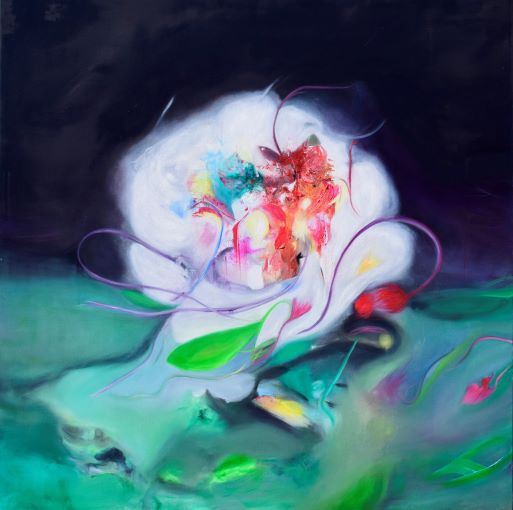
Laurel Holloman, 'Nightbloom'
What inspired you to make the move to full-time artist?
I later started painting in my 30’s between seasons of a TV series when I had six months off. My husband at the time was getting a Master’s Degree in Architecture and I remember feeling as though I wanted to go back to school, not for acting but for art. I started doing large-scale abstracts in my free time. I had just had a baby, and I would paint while she was napping. I started buying every book on painting and color mixing and the history of abstract art. I mainly started researching the women. I studied Joan Mitchell, Helen Frankenthaler, Jay DeFeo, and Agnes Martin. Jay DeFeo and Agnes Martin had very interesting lives. Agnes Martin even quit painting for seven years and then returned to it later. I was beginning to see that it was a lifestyle. Painting felt very different from acting… it starts from a different place, a place of obsession.
I was exploring a different side of myself privately. I remember when each season of the TV show was over, I really did not want to be on a TV set again. I wanted something different. I even turned down a movie during this time - I was about to adopt my second child, but I think I was also exhausted from working 15-hour days on sets.
I was beginning to understand how therapeutic painting could be. With my first child, the birth took a frightening turn, and I had an unexpected emergency C- section. I had PTSD afterwards; the experience haunted me. I painted this large 2-meter mural when my daughter was about six months. It mostly looked abstract, but I had unconsciously hidden two spines (adult and baby) inside the painting that were floating under water. I used mostly greens and blues for the painting, layering linseed at first than glazing the second layer with a resin so you could see through to the next layer. It was as if these two spines were floating under water. That was how I felt during the labor, that we were both under water and I needed to get us out. I remember also thinking: ‘I don’t want to be here if my daughter does not make it’. It sounds dark when I express it, but my journey to have a family was very complicated and full of ups and downs. I wept after I painted it, but I had no idea what was happening while I was painting it. I was in some sort of trance and the painting went fast. I remember shadowing out the areas that had the spine, but that is it. The haunting feeling left. I never put this painting in a collection; I just needed to paint it for my psyche. This happened in 2005, and I was in the second season of the series, it was not on the radar for me as an artist career. I was fully inside my acting career. Painting for me at that time was not consistent like it is now. It was just carving out some areas of discovery when I had time away from parenting young children and time away from TV. This was the beginning of a change that happened years later.
I wanted to be creative, but I wanted to work privately on something in which I could control the time frame and final product. It was 2010 and I was auditioning, which felt tedious with two small kids. It was a rough time. I was in a trial separation that I had encouraged, my marriage was falling apart, and the grief underneath was unbearable. I had fallen out of love, but still wanted a family for my daughters. I was the full-time mom and provider. I went to NYC and painted for 8 months. I lived in a painter’s loft and painted The Tribeca Series. I was still auditioning for some good parts, but my heart was not in it. All the grief of the loss of my marriage and the loss for our family was inside that collection. I sold the first two pieces to someone coming out of a divorce and I ended up selling out the entire collection shortly after. I was shocked. There are some paintings that reflect all that I was feeling at the time. “I Walk Alone”, “And, I Love You” and paintings like “Swan Dive” and “Enlightened” came out of that collection. I called my agent and manager and said do not send me any scripts. I want to take a year off. By 2012, after painting every day, I had the Paris exhibition (Coeur Libre) lined up. I won that public exhibition out of 200 applicants, and I sent in a CV and portfolio that had no history of acting. My business manager from acting helped me navigate many of the business and logistics aspects of my first public exhibition at the Pantheon in Paris. She also helped me navigate the exhibitions in Venice Italy (Free Falling 2012) and the one in Berlin (All the World Inside-2013). It went very fast from this point to the collateral group show, Nell’Aqua Caspisco during the 2013 The Venice Art Biennale.
It was not all perfect. Some proposals did not work, and some did. I tried for a solo show that was another collateral event at the Biennale and it did not work. Lea Matterella, my curator in Venice and in Berlin, was very helpful. Although I had a piece chosen for a group show, the solo show did not happen and she said, “You have to just keep painting. This world can be closed off… an academic world, and you will be fighting your past career for a long time, especially with the internet. But as long as you keep working... that is what matters the most and you will carve out your place in this”. It was the perfect thing to hear, and any rejection inspired me to work harder. As an actor, you experience so much rejection. You may audition many times only to get one project a year. I have a very thick skin. I’m resilient this way. I want to share this because the move had many ups and downs, and nothing was just handed to me. I was still feeling like an imposter somehow, I was still pushing against this doubt. It was not until later after I got the Museum exhibition (Everglow-2016) in Amsterdam that this started to go away.
My life at this point was so surreal and full of adventure that there was no way I was going back to sit around on a set. I felt free. My world and my children’s worlds were now more global. I worked feverishly during this time, painting some pieces that were 10 by 14 feet (3 by 4,5 m). After the Venice Art Biennale in 2013, I could not really imagine going back to acting, and by this point I was incredibly disciplined about painting every day because I was dealing with deadlines and shipping to Europe and now had a client base that covered Europe, Asia and the US. I sent proposals to other Biennales and won the one in Argentina (Buenos Aires-2014). My life was studio time, working on proposals, and parenting. I surrounded myself with other artists, photographers, and architects that could understand what I was doing. No one in film could understand it.
I will always love story telling, but to walk away from wanting to be on TV seems criminal in the USA. It is hard for people to understand this in America - we are so "celebrity obsessed" - so to walk away after a hit series is very confusing for people, but for me it was so personal. If you ask a European about a creative career switch, they think it is perfectly natural to do both acting, art, or direct a film. They see it as simply a creative crossover. For example, you see Juliette Binoche dance, paint, and act. It is part of her journey, her story. In France, this is perfectly natural. If you try to switch in the USA, there is this feeling that they want you to fail, and you should just go back to what you did before. I spent a lot of time thinking I needed a Master’s in Art to keep going but I was already in a place where I had deadlines for show after show - that is something school cannot teach you.
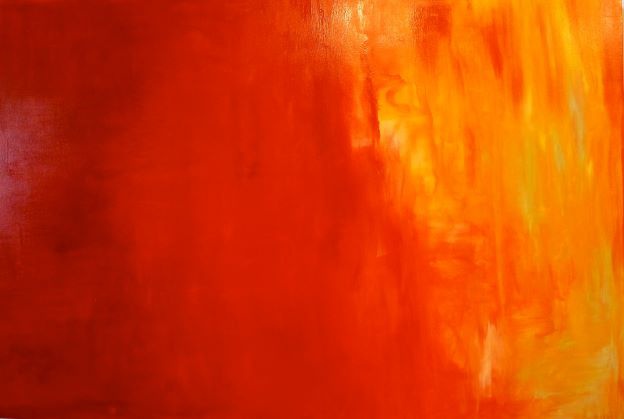
Laurel Holloman, 'And, I Love You'
I imagine that this career change must have been daunting.
It was incredibly daunting. I left a ten-year marriage and a twenty-year acting career all at once with no financial support. My Dad said he was so worried for me, but so impressed with the courage it took. I named the 2012 Venice exhibition “Free Falling” because it described my life at the time. I worked so hard on that show. Later on, in 2016, there was a point after the Amsterdam Museum exhibition that I had surpassed my best year in TV financially with art sales. That was very rewarding from a practical place. I do know my career change was not financially motivated as much as a spiritual one. I was also willing to live more simply to do something that I loved, so if not every year was as successful as the Museum show, I was ready to ride that out. It has been steady because I have pushed to do one solo show a year. I do find that sharing it has helped a lot of people, especially women, when they have questioned a career change, which can be very common after a burnout or having children.
I have tried to surround myself with people that take large risks. The world opened up for me to see there could be another way to work, and I had lots of support. Mainly it had to work because I needed it to for my kids. I had some inspiring people around me encouraging me to keep going when it was not easy. I also love to travel, and art was providing me so many deeper, more soulful experiences. I truly love being in the company of other artists. Artists have a way of coming together to unite. There is an unspoken language between artists. They know the hours put in to get a show done. They embrace life in this great way. My favorite memory was a dinner on my birthday in Venice, after the second day of installing Nell’Aqua Caspico. My kids fell asleep at dinner and Claudio Libero, the curator of that show, and Giocacchino Pontrelli, another artist in the show and a great painter, carried them back over their shoulders and we were all singing through the streets of Venezia. Everyone was so excited about the opening… It was a magical, fun time, and I am so grateful for the help and support I received during this time. Being around artists there is this bohemian energy that I love. In addition, many of the artists I had met in Italy did different things others than just art, like teaching or writing. I was simply being introduced to another way of living and I was realizing when you live a life going from set to set or waiting to be cast… sometimes you are not really living. The world can be myopic. When I say this, it is important to know many of my friends are still in Film and I fully support them, and I am in awe of their talent – this was just where I was at the time.
In the last few years, I have also partnered with an art dealer in getting some of the female artists I have exhibited with in the past shown online on Artsy. Their pieces have sold while not giving away the traditional 50 percent. I am super proud to see these women have their artworks seen and acquired on a great platform and have the pieces collected and they can earn what they need to keep their studios going. One of the artists I met at the Biennale in Argentina, Marialucia Diaz from Bogota, Columbia was happy to be included. She makes these beautiful hand-sewn installations that are just stunning, one of her pieces was just featured in Luxe Magazine. I saw early on that many of the women I met in group shows were struggling to keep their studios going. I wanted to create a platform in which their work could be seen without the gallery taking so much. It has worked and we are still adding other artists to this roster. The traditional format that a blue-chip gallery has to define the career path today has changed with the power of social media. I see so many talented artists getting overlooked at times, especially women. Or you hear stories of galleries going out of business and the gallery keeping the artist’s work, which is criminal but happens. I had even loaned a painting for a group show at a very well-known gallery and they were negotiating a very low price. I took it back afterwards and put it in the museum show in Amsterdam and sold it myself for a much higher price. I find it important to do more public exhibitions so I can control how the painting is collected. There should be a union out there to protect artists like there is for actors… but there is none… It is the Wild West.
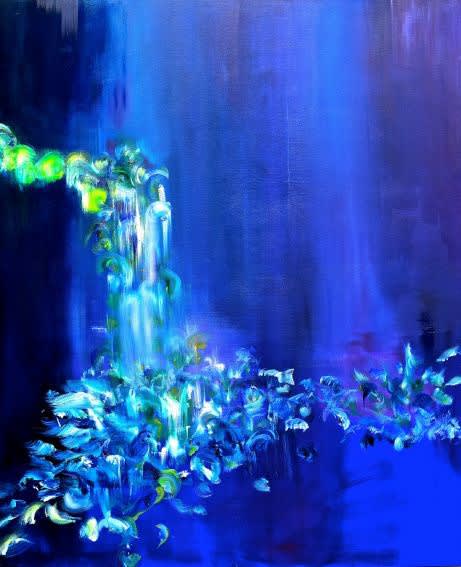
Laurel Holloman, 'The Breeders'
Now that you have made the decision to go back to acting after over 10 years away from the screen, how do you think this will affect your art career? How are you feeling about this new stage?
I had no intention of going back at all, in fact I was very scared it would hurt my art career. I made initial decisions not to be connected with anything linked to TV while I was preparing a duo-exhibition in Milan (Color Forest 2018 with the artist Susi Kramer). It was important for me to maintain something I had started, which I now was protective over. It only changed later in 2019 when there was a chance to go quietly back to acting on a lighter schedule, not a regular schedule. By being a guest star, I could make the schedule work and keep the press separate, which was so important to me. I was turning down anything that linked art back to acting. After Color Forest received press from La Repubblica, Corriere della Sera, Architectural Digest Italia, and other art related magazines, I did see a separation starting to happen. No one was asking about the acting past as they were asking about prior exhibitions. The narrative was changing.
I finished my Paris exhibition Memory and Movement at Galerie Joseph in 2019, and I returned home and stepped back into two episodes. It was quick and then I started back painting again. It was perfect. I could not ask for a better way for it to fit. Going back to acting answered many questions for me. It was also clear to me the TV show was very different from the original, of course it was, we live in a different time. It was at this moment I fully realized no one in the art world really cares. I had already won several successful exhibitions in the last few years. The rebooted TV show was fun, and I was not stressed by a tough schedule. I rolled the dice, and it was perfect. It was also a blast to act and connect with people that were once a family to me. At the end, Memory and Movement was listed as one of the top ten exhibitions in Paris by Arts and The City that 2019 summer, so it was really important that I finish that show and it is an exhibition I am very proud of. I could see now that there was a way to do both.
It would seem that if an exhibition sells that is all that matters, but the truth is that working daily in the studio is what matters most. How am I growing? What can I express? The acting world will never fully understand what happened to me in the last ten years; it is hard to see a world beyond a film schedule when you are inside of it. I am like an alien to them, so I simply stopped being afraid and I stopped trying to explain myself to both sides. There is so much power in not explaining yourself in life. It took me a while to get there. It is easy to get caught in old fears, but ultimately the goal is just to challenge yourself creatively, be free, and keep moving forward. Intuition is everything in life and you have to really lean into it to find your truth and find your path even if it looks different to other people’s paths. Acting is part of me, but it does not define me. I know I will be painting in my 80’s if I make it there. Not sure about that for acting but... who knows. I would never go back and change what happened to me from 2010 to 2020. It was an extraordinary defining time in my life. I am also glad my daughters witnessed it. I want them to be courageous in their choices. I want them to see and believe that anything is possible.
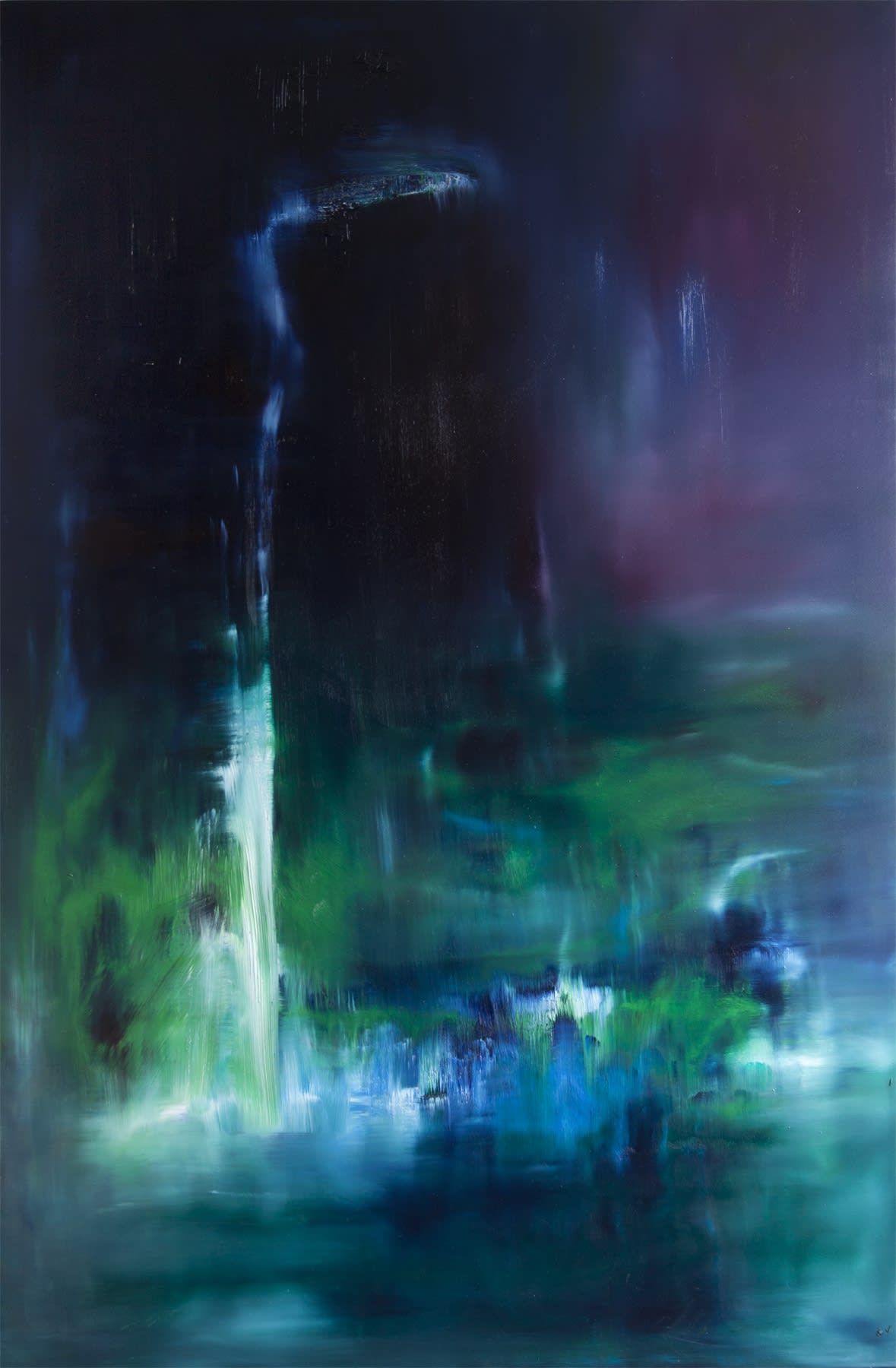
Laurel Holloman, Let Me Fall
After being postponed multiple times over the last two years, your solo show ‘Deep Dive’ will finally be going ahead at Bankside Gallery in July 2022! We, along with your devoted flock of diehard fans, have been eagerly waiting in anticipation for this exhibition – what can we expect to look forward to?
The paintings are large, colorful, and full of energy. They are a celebration of nature, and they reflect a sparkling energy and passion. I am very excited to see the pieces together because I have not seen them together yet in a gallery. I hope the show offers some joy and playfulness after such a tough few years for most people.
Your paintings are often created using multiple, thick layers of paint, each layer almost concealing whole areas of detail beneath. What is it that attracts you to this method of working?
I like paintings that have hidden surprises in them. I like paintings that create a mood but are still very simple in other ways. Maybe simple in palette or theme. I also like using glazes and pigment powders that show the underpainting beneath. I am always trying for a 3-dimensional effect. I want movement in the pieces, so I also use a slicing technique to create dimension. I like to swirl images and wrap them against each other, so they are having a relationship on the canvas. I would say “Rebirth” is more of a mood painting but symbolizes the sea. I learned a lot from watching other painters talk about abstraction, and why it works. Frank Bowling talks about starting in the beginning without much plan but maybe a thought of a color field and after that, going back in and hitting the areas that highlight the emotion. It is like improvising in the beginning and then seeing what pops and later embellishing it. I do that more now. I did not realize how much I was doing it before. It is a delicate balance though because the brushstroke still needs to be organic to feel and look confident to produce the emotion, if you go back and change too much you can over paint and lose the emotion in the piece.
For me color is everything. I am constantly trying to push the boundaries on color. I still want to push it farther. I am now mixing my own oils from original pigment to get the brightest effect. Which is tough because oils can dry blander after a few days.
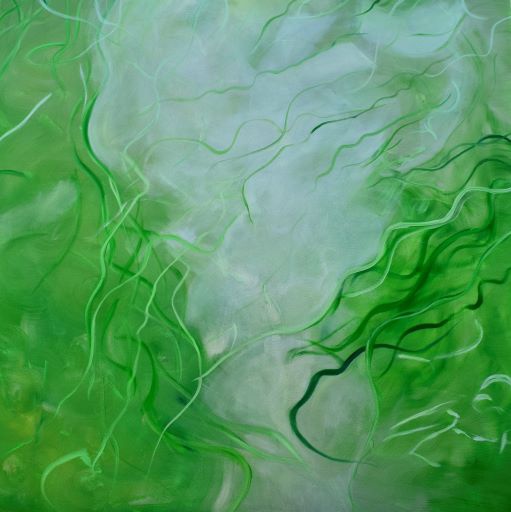
Laurel Holloman, Rebirth
Could you tell us a little more about your creative process?
It starts usually with images on the internet and photographs of my own. It could be wallpaper, a photo of a sunset on my iPhone, the texture of a fabric, an underwater shot in the ocean. Something I saw in life where the palette was bizarre to me. I think anything that has an interesting visual language will grab me. So, it starts with photography and tear sheets, and it advances from there. I will usually test on a small canvas panel or paint with oils on paper primed for oil painting. Many of the Deep Dive paintings I would sketch out all the floral abstracts on the painted canvas panels or oil paper. They were smaller versions in various colors using oil pastels to sketch the movement before painting. It was a way to see how to balance the composition with movement. I often would photograph the larger painting, during its process, so I could see what needed to be removed or added. I would then print the pastel process on paper and add in with color pencils. At this point I had the beginning of a language for each piece. So, I was doing tests first on panels, then using my iPhone to shoot the larger pieces and print on paper mid-way through as I was changing the larger paintings. The paper photos with the added pencil sketching later became my map for the final painting, because I could play with things without the permanence of paint. The canvas panels helped with tone, palette, and movement and gave a base for the larger painting. They were basically color studies. I was also working on large 60 x 60 inch pieces (152x152 cm) so it is more practical to test it on paper or a small panel if you become stuck halfway through.
For the overall feel, I think each piece has a violence and sometimes a Dr. Seuss type energy. I purposely did not want any of the floral images to be too pretty or based in reality. I wanted them to have an oddness and a language fighting against each other. I wanted the figures in each square to either be in an argument with each other or be flowing together. Nothing was photo based or micro shot like the Fertile Ground series (London 2017). It was all very loose, wild, and layered. Deep Dive is my silent rebellion to Fertile Ground which tested my skill set of color matching and detail, but was a mostly an exhibition based on micro shots which stemmed from photos.
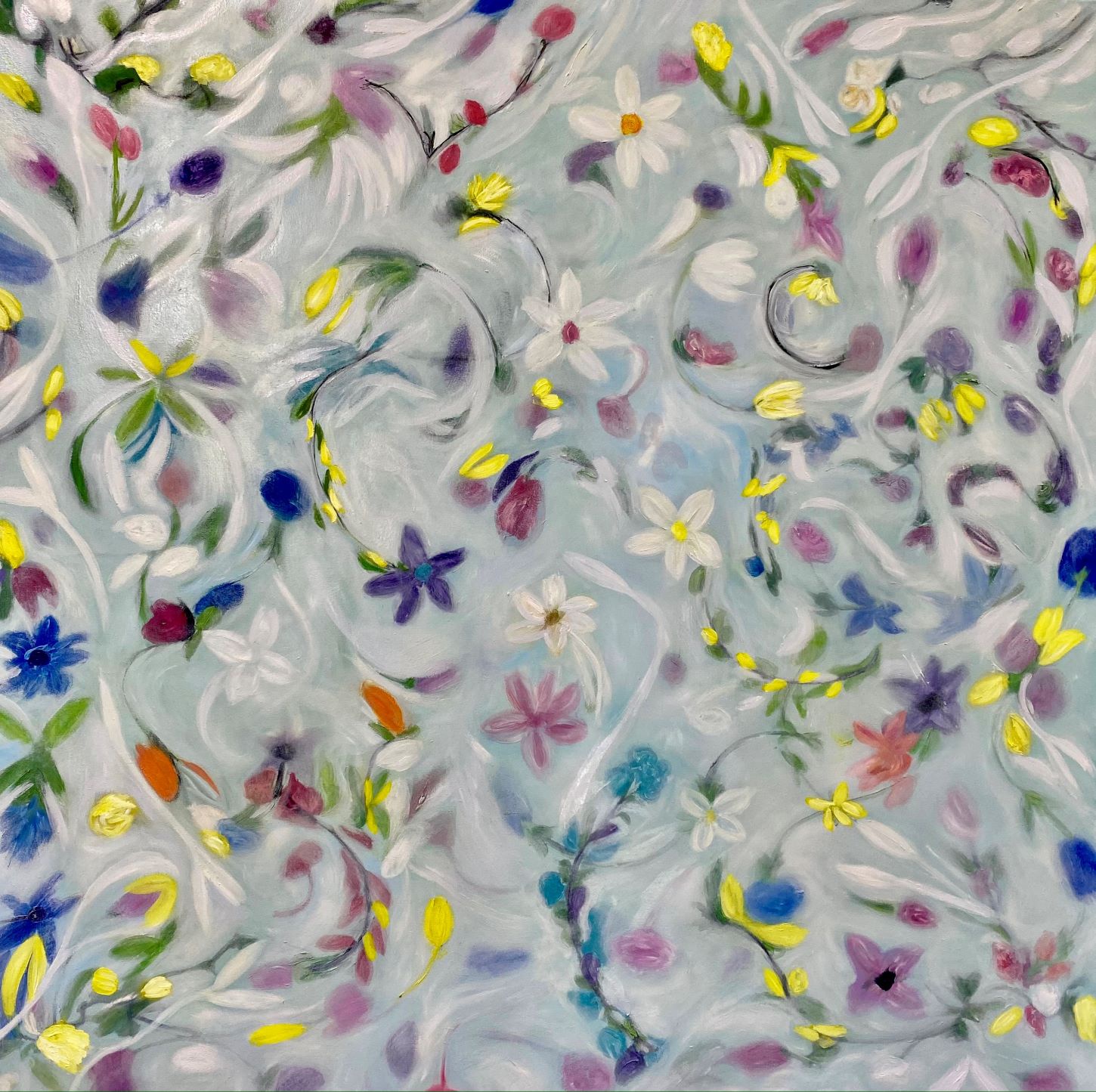
Laurel Holloman, 'Daisy Chain'
You say that color is everything – do you associate certain colors with certain emotions?
Yes. Every color has some emotion attached but I always want to be careful not to label them because I do think it is personal to everyone. The pieces that are most abstract in this collection have a deeper, richer palette based in primary colors like red, green or blue. The movement is very similar to some of the large murals I did for Free Falling and All The World Inside like “Swelling Rage” or “Thrive”. These are the color field paintings. For the first time I played with bright feminine pinks and greens and purples. Also, the whites that have a snowy look and lots of texture so all the colors are surrounded by bright positive space, except the black which was on purpose to see how much I could get the color to pop. These pieces have a joyful quality and funnily enough were, for the most part, painted after I was vaccinated and the world was starting to look normal again. It was a metaphoric 'Deep Dive' to do this show during Covid and to have to reschedule it twice. The collection literally changed as the pandemic evolved. The collection became more joyful and energetic as I had more freedom to be out in the world.
What is it about abstract art in particular that appeals to you?
It is the hardest to paint, although only painters understand that. It very quickly works or just does not. It is easy to copy a flower and paint it pretty, but it is more challenging to create a language that distorts what is most familiar to the viewer and ask them to see it in another way - to ask them to see your distortion of it. To ask them to feel it. It is the hardest to do. I think the goal is eventually to create your own language. This was drilled into me from the curators I worked with in Italy and Amsterdam. They kept saying keep creating your own language with paint and shapes and color. Lea Mattarella would always say look at Paul Klee. I did not have the luxury to come out of a graduate art program. I hit the ground running but I can now see a pattern of a language that I am creating. I think it will still change in another ten years, but it will always have elements of what I did in the beginning.
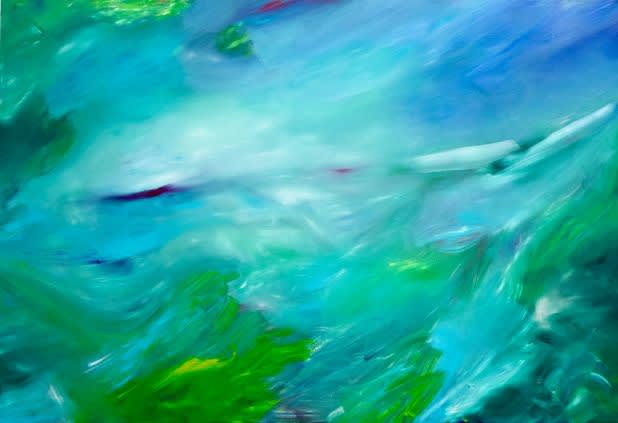
Laurel Holloman, 'Skyfall'
Is there something that you hope to achieve or communicate with your work?
That a painting can take you elsewhere. It can take you to a place when you were younger. It can make you think of a former lover or a magical night. It can remind you of a day that you did not want to end. If you hang something personal in your home, you get to revisit that feeling each day. That is the power of it. You get to see how the painting changes in the light. It is not about the bragging right of owning it... it is something more spiritual. The art world can keep valuing resale or trends, but when you simply love a painting, the value is held in the heart of the owner. I simply want the collectors to love the piece that they acquired, and my hope is that it creates a conversation wherever it is displayed. I have a painting that went to Singapore, and I received a note from the man that collected it. He explained how the painting was in a room they had breakfast in every morning. His wife (an interior designer) noted that the colors changed throughout the day, and they always saw something different. He was from Australia and surfed when he was younger. The painting reflected life in the ocean. It took him back to being in the water every day. I knew then that what I had communicated was clearly seen and felt, and that was great.
During Color Forest I created a painting called “How Will My Children Remember Me”. This was painted during a busy time, and it was a personal painting to me. It was one of the first pieces sold - the collector felt a connection to her own mother when she saw it, or at least that is what she expressed. I painted it with silvers and blues and used interference pigment powders… but it loosely has a feel of a patterned baby blanket with birds and flowers that had faded away, so it played a little with how we actually remember things.
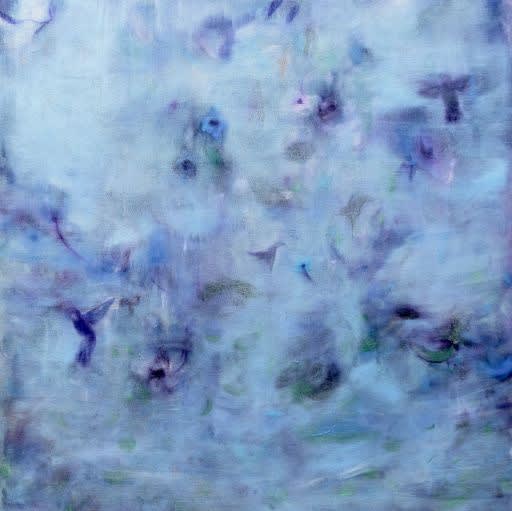
Laurel Holloman, 'How Will My Children Remember Me?'
How do you know when a painting is complete? Do you find it is quite impulsive, or more of a struggle deciding when to put the brush down?
Composition can answer it for you. If you are still feeling that something is unbalanced, it is impossible to walk away.
What are some of the greatest joys – as well as the greatest challenges – of being an artist?
It is more demanding physically when painting large scale than people understand, and it moves so slowly it can really test your patience. You can have a very productive week followed by a week of empty ideas; you have to be really patient to get 25 oil paintings done when some weeks it is not flowing.Those are the challenges, but the joy is when you have captured something in paint that was really personal and authentic, and you can just feel it.

Laurel Holloman, 'Blood Ocean'
What’s next for you? Any exciting plans or projects that you might be able to share…
I am excited to show in Barcelona for FIANBCN at the Museu Maritim de Barcelona and meet other artists. I am in the process of putting together a New York show, but I want to take my time on that one. I want to go back to larger scale pieces before I head to NYC.
If you would like to find out more about Laurel Holloman's forthcoming exhibition at Bankside Gallery, click here.
